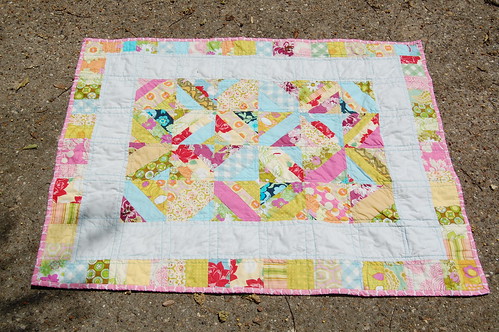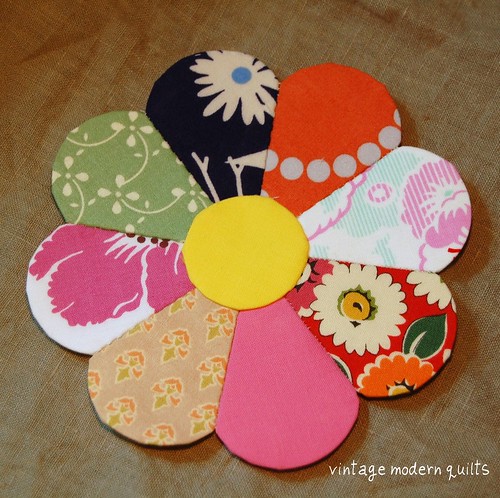Quilt Preservation Techniques for Future Generations
Use acid-free storage materials to prevent yellowing and deterioration of fabric over time. Opt for cotton or linen covers instead of plastic, as synthetic fibers can trap moisture and promote mold growth. Ensure that the storage environment maintains a stable temperature and humidity level; ideally, keep it around 70°F with 40-50% relative humidity.
For display purposes, consider using hangers designed to avoid stress on the fabric. Utilize padded hangers or quilt racks that support the weight evenly. Avoid direct sunlight and fluorescent lighting, as these can fade colors and weaken fibers. Instead, opt for filtered or UV-protective glazing if incorporating into a gallery or museum.
Repair small damages promptly to prevent further deterioration. Use historically accurate fabrics and threads in repairs to maintain integrity. When cleaning is necessary, select dry methods or consult a textile conservator to avoid unintentional harm.
Document the history and origin of the fabric piece. Maintain a record including photographs and any relevant stories to enrich its significance for future generations. This not only adds value but also preserves the narrative woven into each stitch.
Choosing Appropriate Storage Materials for Quilts
Select acid-free tissue paper or unbleached muslin for wrapping. These materials prevent yellowing and deterioration over time. Avoid plastic as it traps moisture and leads to mold growth.
Storage Containers
- Use archival boxes made of acid-free materials to store folded textiles.
- Ensure containers are breathable, allowing air circulation while preventing dust accumulation.
Wrapping Methods
- Wrap layers with acid-free tissue to provide cushioning and minimize creasing.
- When stacking, alternate the orientation to distribute weight evenly and reduce pressure points.
Regularly check items stored for any signs of damage or pests, ensuring the preservation environment is consistent and controlled. Store in a cool, dry place away from direct sunlight, ideally in temperatures between 60-70°F with 40-60% humidity.
Techniques for Cleaning and Refreshing Quilts
Begin by assessing the material composition. Natural fibers require gentle handling. Use a vacuum cleaner with a low suction setting and a soft brush attachment to remove dust.
Hand Washing Method
Fill a bathtub with lukewarm water and add a mild detergent suitable for delicate fabrics. Submerge the item gently and avoid vigorous washing. Swish it around softly to dislodge dirt, then drain the tub and refill it with clean water to rinse. Repeat this step until the water runs clear.
Spot Cleaning
For targeted staining, combine equal parts white vinegar and water in a spray bottle. Lightly mist the affected area, then blot with a clean cloth. Avoid scrubbing, as this can damage fibers. Rinse with a damp cloth afterward.
| Cleaning Method | Material Compatibility | Notes |
|---|---|---|
| Vacuuming | All types | Use low suction and soft brush. |
| Hand Washing | Cotton, wool | Gentle swishing only. |
| Spot Cleaning | All types | Blot, don’t scrub. |
After cleaning, line dry in a shaded area to prevent fading. Avoid direct sunlight, which can weaken the fibers. For faster drying, a large flat surface is preferred to maintain shape.
Best Practices for Displaying Quilts Without Damage
Use acid-free materials for display. Acidic surfaces can lead to deterioration over time. Choose backing boards and mounting materials that ensure longevity.
Limit exposure to sunlight. Prolonged UV light can fade colors and weaken fibers. Consider using UV-filtering glass or acrylic for framing.
Avoid hanging with metal clips that can create stress points. Instead, use soft fabric loops, which distribute weight evenly and minimize strain on the fabric.
Ensure a controlled environment. Maintain a stable temperature and humidity level to prevent mold growth and fiber degradation. Ideal conditions are around 70°F (21°C) and 50% relative humidity.
Rotate displayed pieces periodically. Changing the position helps avoid uneven fading and minimizes wear on any one area.
Keep away from dust and pollutants. Display items in clean, enclosed spaces or use protective covers to shield from debris.
Inspect regularly for signs of wear or pests. Early detection allows for prompt intervention to address any issues before they escalate.
Use soft, padded hangers or rods. These prevent creasing and support the piece’s structure, ensuring it hangs properly without damage.
Avoid pinning or tacking directly to the fabric. Instead, use non-invasive mounting techniques that will not leave marks.
Identifying and Repairing Damage in Quilts
Carefully inspect the fabric under good lighting. Look for discolorations, frayed edges, or missing stitches. Pay attention to seams, as they are often prone to wear.
To address minor tears, use fabric adhesive. Apply it to the edges of the tear, holding them together until dry. For small holes, consider patching with a matching fabric.
For faded areas, test fabric paint on a similar, inconspicuous spot first. If successful, lightly brush it onto faded sections using a fine paintbrush.
If the backing material is damaged, replace it by carefully unpicking the stitches. Use a new piece that matches the original as closely as possible.
To secure loose threads, use a needle and thread that matches the quilt’s fabric. Gently pull the loose threads and stitch them back in place to avoid further unraveling.
To prevent future damage, store items in a cool, dry place away from direct sunlight. Use acid-free materials for wrapping and keep humidity levels low.
Assess the overall structure regularly for weakness, particularly in older pieces. Reinforce seams and edges with additional stitching to prolong life.
Environmental Conditions for Optimal Quilt Preservation
Maintain a consistent temperature range between 60°F to 70°F (15°C to 21°C) with low humidity levels (30% to 50%) to prevent mold growth and fabric degradation. Avoid exposure to direct sunlight, as UV rays can cause fading and weaken fibers over time.
Store items flat in a dark, climate-controlled environment. If hanging is necessary, use padded hangers and ensure that the weight is evenly distributed to prevent stress on fabric edges.
Handling Practices
When touching textiles, wear cotton gloves to minimize oil transfer from hands that can lead to deterioration. Always handle with care to avoid unnecessary creasing or stretching.
Storage Solutions
Use acid-free tissue paper and boxes to safeguard against environmental hazards. Avoid plastic bags, which may trap moisture; opt for cotton or linen bags for breathable storage options. Regularly inspect items for signs of pests and consider using cedar or lavender sachets as natural deterrents.
Documenting Quilt History and Care Instructions
Maintain a detailed log of the origin, maker, and any historical significance of each piece. Include fabric types, dyes used, and techniques applied. This documentation provides crucial information that enriches the understanding and value of the item.
Recording Detailed Instructions
Provide specific care instructions alongside each creation. Recommend a gentle hand wash using mild soap, avoiding harsh detergents. Advise against direct sunlight exposure to prevent fading and recommend storage in a cool, dry environment, ideally folded with acid-free tissue paper to avoid creasing.
Photographic Documentation
Utilize high-quality images to capture intricate details and flaws. Document stitching patterns, fabric wear, and repairs to create a visual history. This can be especially useful for insurers or future caretakers.
Q&A: Quilt preservation
How can you store heirloom quilts to prevent damage from light exposure and reduce the wear and tear from hanging on display?
To store heirloom quilts properly, avoid prolonged hanging, which causes stress to the fibers and leads to wear and tear. Instead, use archival storage boxes lined with acid free tissue or washed unbleached cotton muslin. Store the quilt in a dark, dry area to minimize the amount of light exposure and reduce deterioration, especially when handling a quilt made with antique textiles.
Why is it important to avoid using cardboard boxes or placing a quilt in a basement for long-term quilt storage?
Cardboard boxes can release acids that damage quilts and textiles over time, while a quilt in a basement is vulnerable to mold and mildew due to humidity and poor air circulation. The best way to store your quilts is in archival storage boxes or a cedar chest lined with tissue or washed cotton muslin, and kept in the living areas of your home.
How does the International Quilt Study Center recommend refolding or rolling a folded quilt to avoid stress to the fibers?
The International Quilt Study Center advises refolding a quilt periodically in different directions to prevent permanent creases. Using unbuffered tissue or washed unbleached cotton between folds reduces direct contact with the fabric and distributes pressure more evenly. For long-term storage, rolled storage using archival methods is also recommended for quilt tops and finished quilts.
What are the risks of using mothballs or direct contact with wood when trying to store a quilt, including quilts considered antique or museum-quality?
Mothballs contain harmful chemicals like naphthalene, which can stain and damage textiles. Direct contact with wood can cause discoloration and chemical reactions with fabrics. Curators and quilt museums prefer archival storage solutions such as Gaylord Archival boxes, acid free tissue, and clean, stable storage areas to ensure proper care and preservation of quilts for future generations.
How often should you refold a quilt to prevent damage, and what materials should you use to protect the back of the quilt during storage?
To prevent permanent creasing and fiber stress, it’s best to refold a quilt every 3 to 6 months. When folding, use archival tissue or washed unbleached cotton muslin to cushion the folds and protect the back of the quilt. This method supports long-term quilt care by minimizing abrasion and reducing damage in storage and display conditions.
Why is the basement or attic not the best to store quilts, even if they are old and new?
Basements and attics often experience extreme fluctuations in temperature and humidity, which can lead to mold, mildew, and fabric deterioration. For proper storage of quilts, it’s recommended to use stable, climate-controlled spaces such as closets or under-bed storage in living areas, especially when preserving both old and new quilts.
Why is colored tissue not recommended when using tissue to store quilts or other textiles?
Colored tissue may contain dyes and acidic compounds that can transfer to fabrics and cause staining or chemical damage over time. For quilt care, always use acid-free archival tissue or washed cotton muslin to wrap or layer between folds, ensuring safe storage of quilts without the risk of discoloration or fabric breakdown.
How can storage and presentation methods affect the width of the quilt and its long-term structure when quilts are displayed or folded?
Improper storage and presentation—such as folding along the same lines repeatedly or hanging quilts by their corners—can distort the width of the quilt and weaken its fibers. For the best results, support the quilt evenly when displayed, rotate its position, and use proper materials like archival tissue during folding to maintain structural integrity and avoid permanent deformation.
What is the proper way to fold a quilt to create minimal stress on the fabric during storage of textiles?
To fold a quilt properly for storage of textiles, avoid sharp creases by folding loosely and placing archival tissue or washed cotton muslin between layers. This helps distribute pressure and prevents fabric breakdown. Rotate folding directions periodically to maintain the quilt’s structure and avoid permanent damage to the fibers.
Why should quilts not be placed in direct contact with materials containing any ingredient in mothballs?
Quilts may absorb harmful vapors from mothballs, which typically contain naphthalene or paradichlorobenzene—chemicals that can stain, weaken, or degrade fibers over time. Items used to store quilts should be chemical-free, and natural alternatives like cedar blocks should never touch the quilt directly. Quilts are to be used, preserved, and stored with care to ensure longevity.



